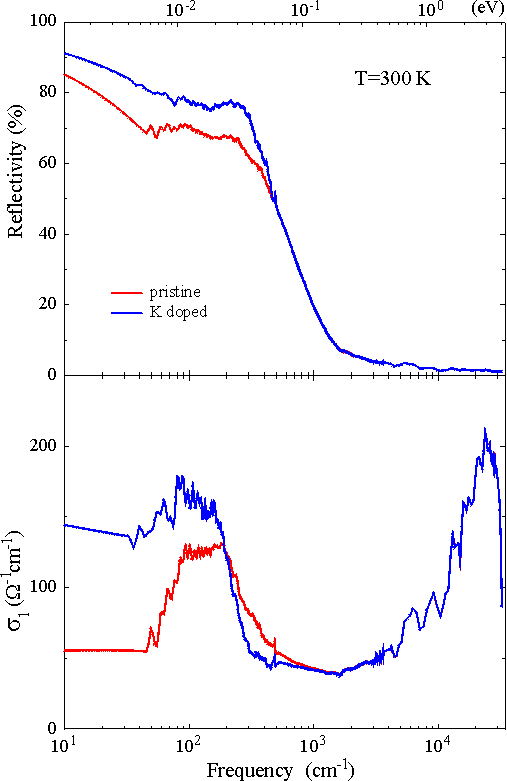Carbon nanotube: an ideal one-dimensional quantum wire
Transport properties in single walled carbon nanotubes

The synthesis of single walled carbon nanotubes (SWNT) opened a new field of investigation for 1D system. Carbon nanotubes (CN) are cylinders of a few mm length and of a diameter in the nm range, obtained by wrapping up a single graphene layer, the starting ingredient. There are many possibilities to roll-up a graphene layer into a cylinder, and the CN are classified (i.e. metal, insulator, semimetal) according to the helical symmetry around the axis of the cylinder. The manifestation of the (exotic) metallic behaviour in SWNT is controversial since twists of the nanotube or interaction with the substrate, over which CNs are deposited, can strongly perturb the CN electronic structure. It is believed that in mats of SWNT (called bucky paper) the metallic nature of the nanotubes manifests much easier. It has been also demonstrated that the carrier density in SWNT can be changed by doping as in the case of graphite. In order to have a clear picture of the effect of the charge transfer upon doping on the transport properties, it is necessary to understand the interplay between different sources of transport: namely, the transport primarily induced by on-tube doping or governed by the doping of the tube-tube contacts. In this respect, we have performed dc transport measurements and optical experiments on pristine and potassium doped bucky paper samples. Our results (Fig. 6.1) on the pristine sample show a Drude component in the optical conductivity despite the non-metallic behaviour in dc resistivity measurements. We attribute this disagreement to effects due to the non-metallic tube-tube contacts. The latter principally affect the dc transport. It also turns out that the potassium doping much strongly influences the tube-tube contact regions than the intrinsic on-tube transport, so that the average dc-conductivity is higher than the ω ≥ 0 optical contribution, averaged over all directions.
